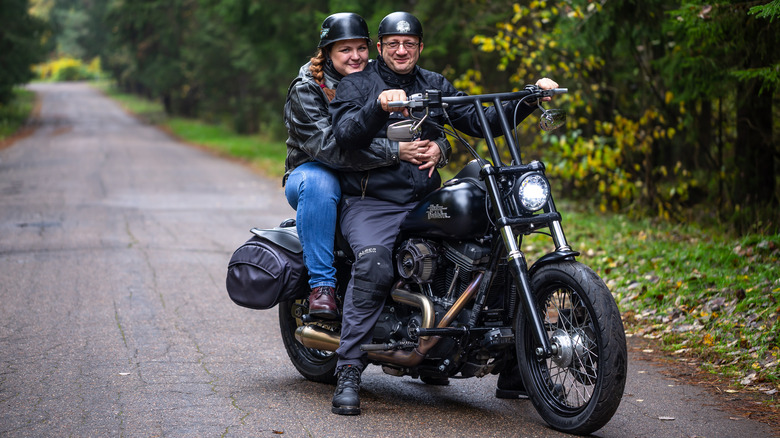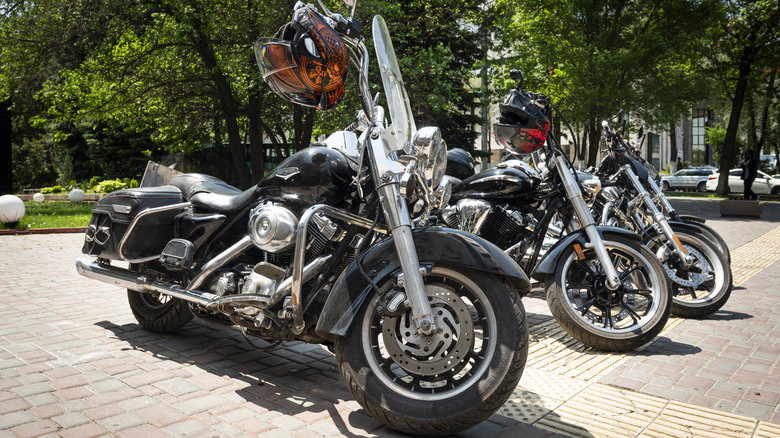What Does FXDB Mean On A Harley-Davidson?
Harley-Davidson has a long history of naming its bikes with codes that look more like serial numbers than motorcycle models. If you've ever come across one with the label "FXDB," it's natural to assume it's some kind of production code. However, for those familiar with Harley and their incredible motorcycles, those letters actually mean something very specific. Harley's model codes are designed to describe a bike's platform, engine type, and sometimes even its styling.
Just like FXST stands for Harley's Softail Standard models, FXDB also refers to one of Harley's most recognizable models — the Dyna Street Bob. The code might not sound as exciting as the bike itself, but once you understand what each letter stands for, it gives you more insight into what you are driving. Like many things Harley does, the system of coding the bikes gives each model a unique identity. And for a model as popular as the Street Bob, it's worth understanding what FXDB really tells you.
What does the FXDB code stand for?
Harley's use of letter codes goes back decades, and while it can be a little confusing at first, there's a clear structure behind it. The "F" in FXDB stands for a Big Twin engine, which means it uses one of Harley's larger engines — something that sets it apart from smaller bikes like the Sportster. Then comes the "X," which points to a narrower front fork, originally borrowed from the Sportster line. These two letters, "FX", have long been used to signal factory customs that mix performance with cruiser styling.
Next, we have the "D", which designates the Dyna platform. Introduced in the early 1990s, Dyna models used a stiffer frame with rubber-mounted engines to improve comfort without losing the raw Harley feel. Finally, the "B" stands for Bob, short for Street Bob. This model is known for its minimalist design, amazing handling and stability, solo seat, and mini-ape handlebars. So, when you put it all together, FXDB refers to a Dyna-frame, big twin-powered, bobber-style bike.
A look at the Dyna and Street Bob legacy
The FX line first came to life in 1971 with the FX Super Glide, which was Harley's first attempt at blending parts from different models to create something new. It pulled design elements from the FLH Electra Glide and XLH Sportster — including a touring-style frame and a lighter front fork. While the styling wasn't an immediate hit, the foundation it laid turned out to be important. Riders liked the idea of a factory custom bike that didn't need to be heavily modified after purchase.
By 1991, Harley had introduced the Dyna frame with the FXDB Sturgis, the very first bike in what would become the Dyna family. That limited-edition model was named after the famous motorcycle rally, which helped kick off a new era of Harley motorcycles focused on improved ride quality and easier customization. In the years that followed, more Dyna models hit the streets: the FXDL Low Rider, FXDWG Wide Glide, and eventually the Street Bob, which adopted the FXDB code. The Street Bob became a favorite for riders who wanted a powerful bike with a highly customizable platform.


